
Cal Poly 18 Bulletin 03
2011-09-01: Many Tasks
In the month leading up to the Oregon Star Party, we put on a big push to get the Cal Poly ready for use.
To-do List:
These items are now either completed or nearly completed.

This photo shows the new
rock-solid "X-Wing Fighter" secondary assembly designed
by Ed Harvey.
A "wet paint" sign would be appropriate because half
the paint is wet and shiny. When it dried, the
paint became a nice flat black.
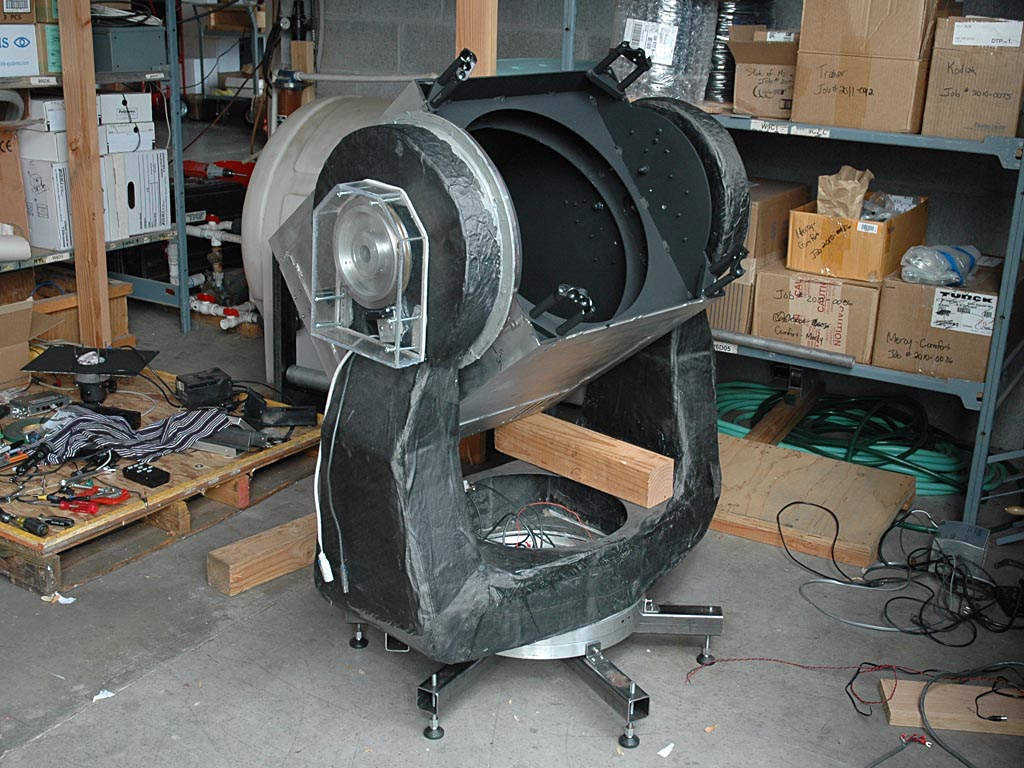
Above is the main section of the tube after painting, all ready for the next round of work.
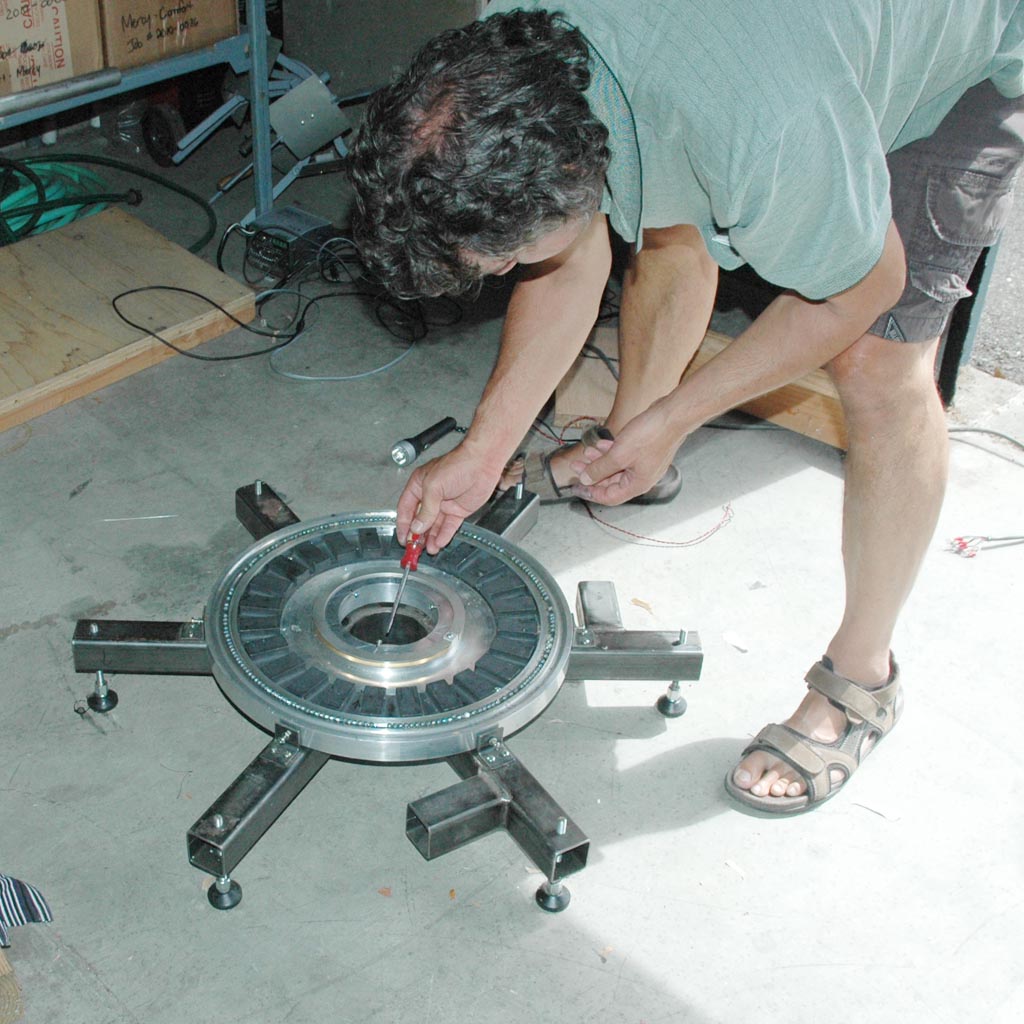
To install the azimuth
encode tape, we had to disassemble the azimuth bearing. This
picture shows Dan
right after we had lifted off the telescope. He is removing the
ring that carries the encoder tape.
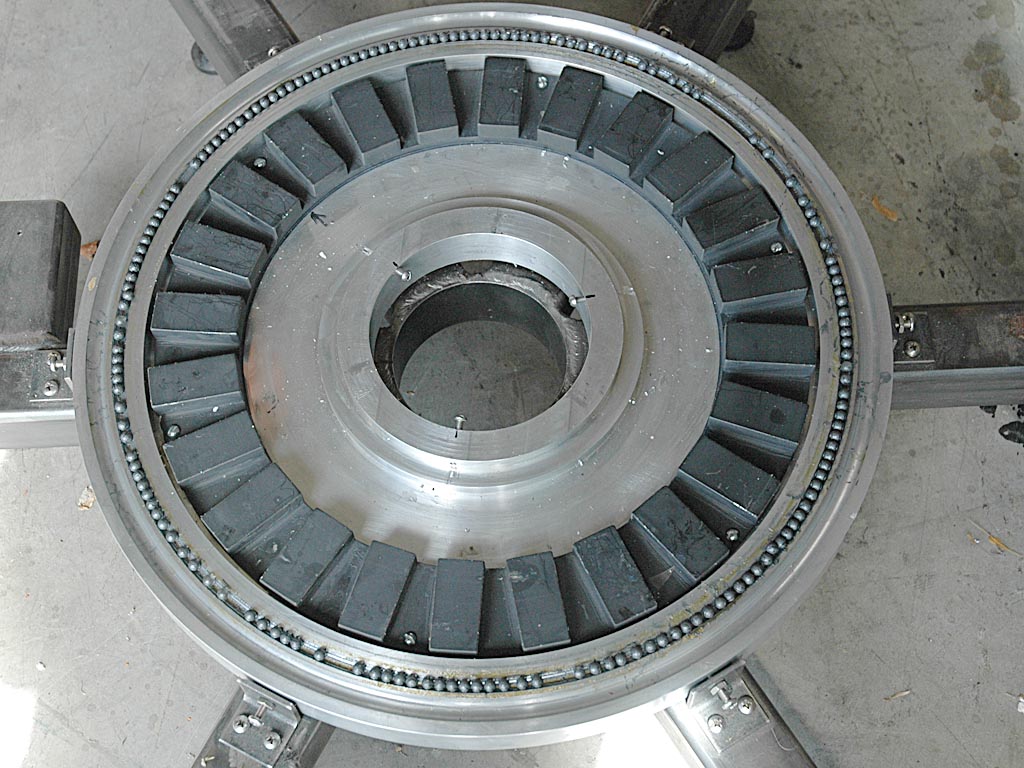
Here is the ring of
magnets. Later, we cleaned out all the crud that had accumulated.
The azimuth ring fits
over the central hub and is secured by three screws.
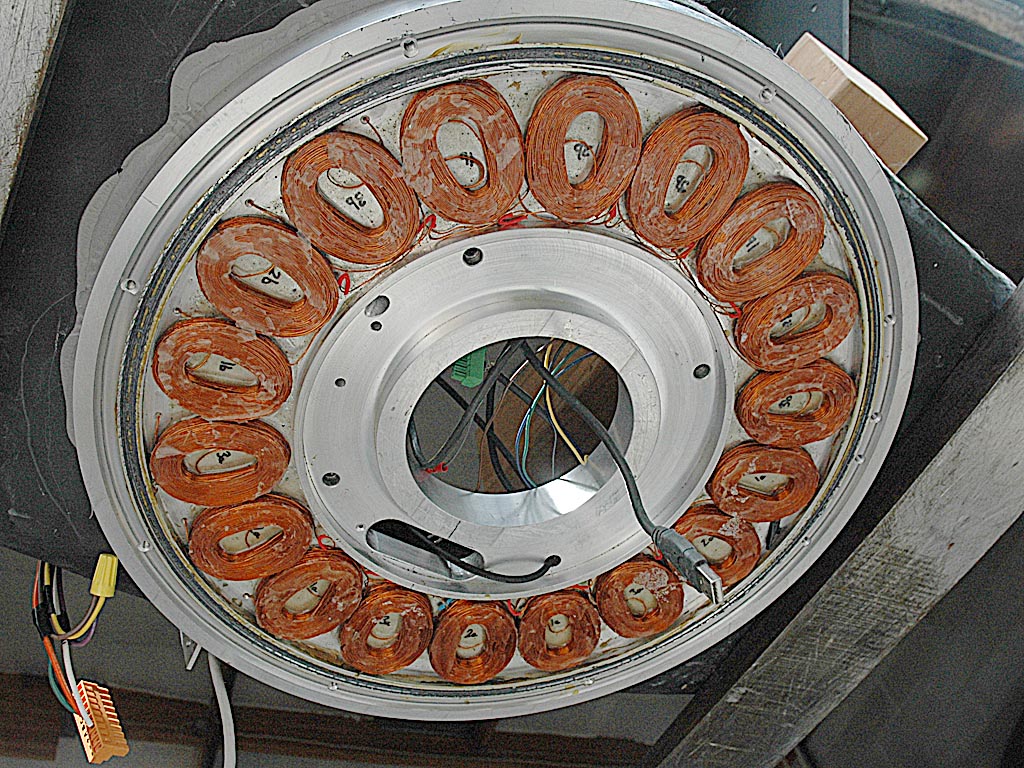
To work on the coils,
Dan lifted the entire telescope with the forklift truck, so this
view is looking up from
underneath.The copper wire to one of the coils was broken. The
repair, wrapped in heat-shrink tubing,
is visible in the lower right quadrant of the magnet ring.
Below is the new
altitude friction damper. Two fingers are pressed against the
altitude by springs contained
inside a block of high molecular weight plastic. The screw allow
adjusting the amount of friction. Ugly
prototype construction, but it works.
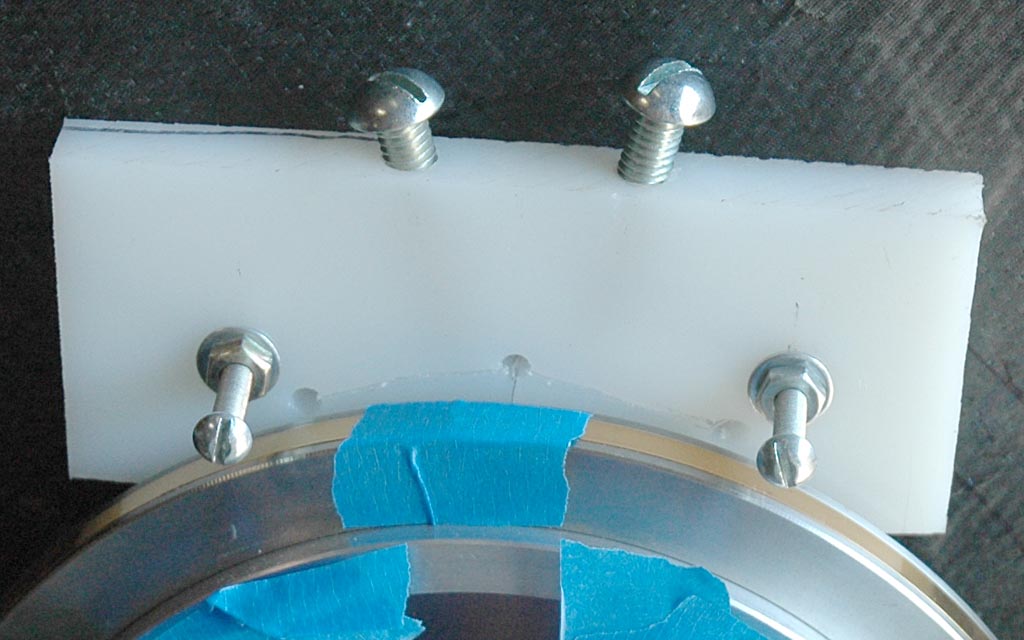
Here is the fixture that
will hold the limit and homing switched. Three aluminum blocks
glued to the
fiberglass housing support the fixture. The switches are not yet
installed. This photo was taken when
glue was setting.

In azimuth, the switches will be held on a tab bolted to the upper side of the main bearing.
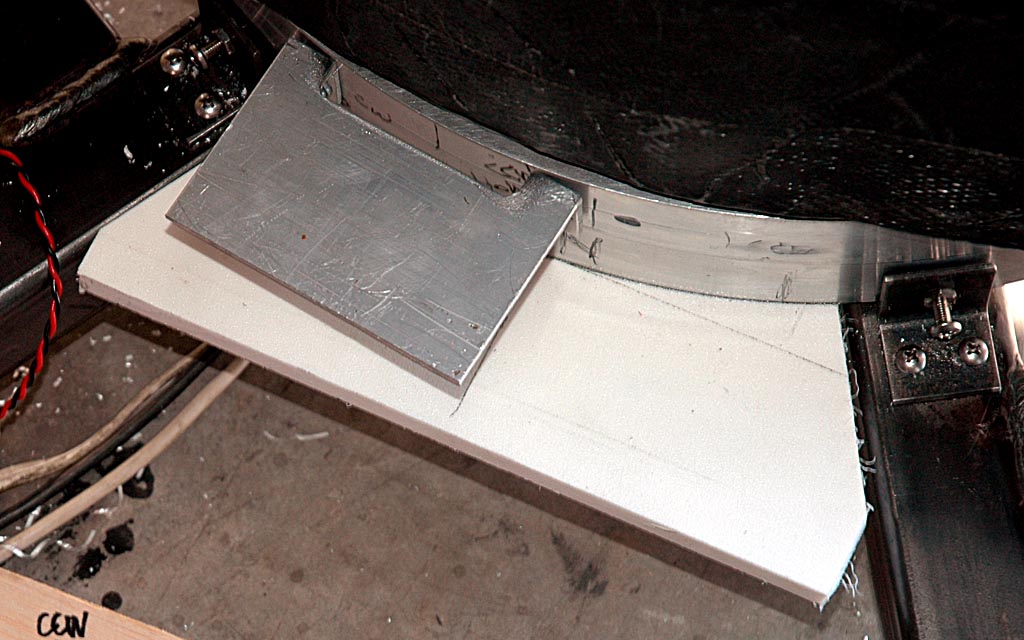
These arcs of steel strap define the CW and CCW rotation limits and the homing location.

Observing run....
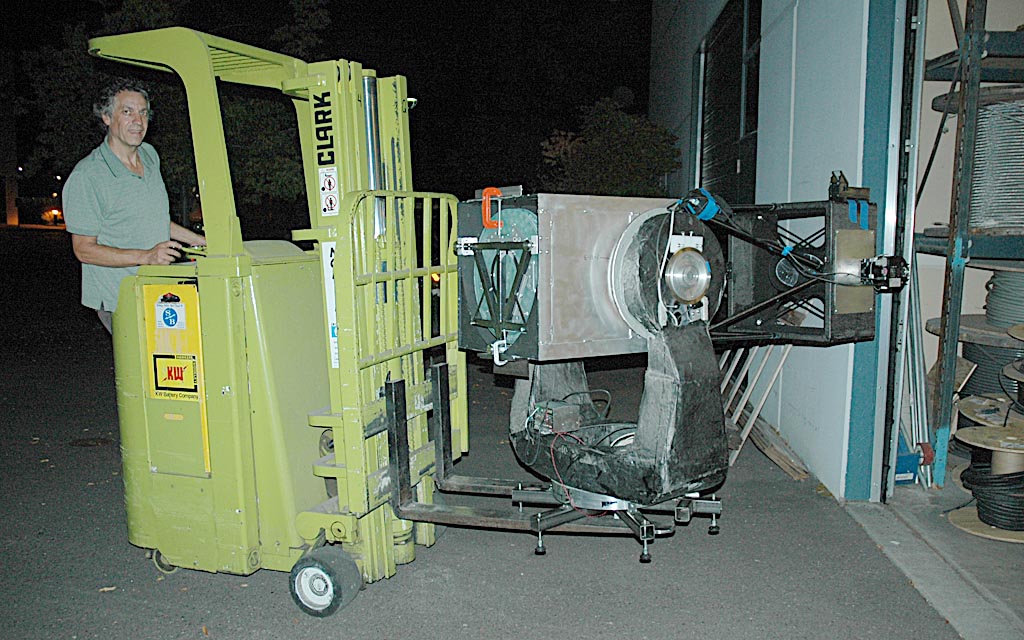
On the night of August
24-25, we attempted to make a pointing model and calibrate
azimuth ticks-per-rev.
Clouds certainly did not help. Here Dan is using the forklift to
move the telescope into the parking lot.
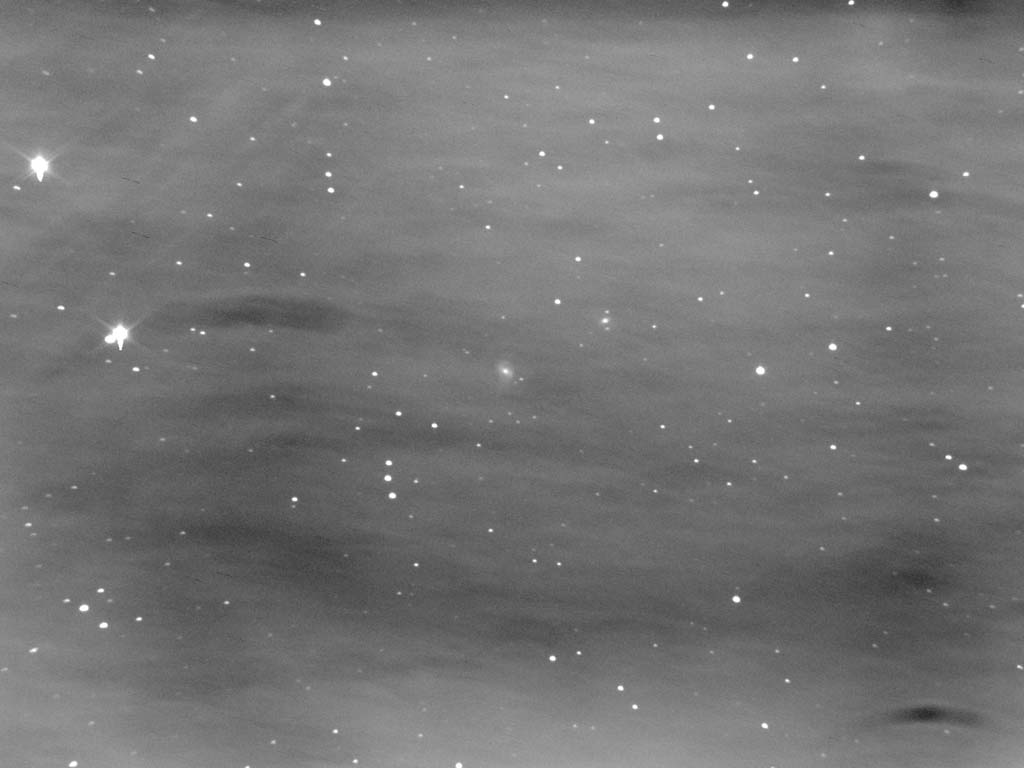
Well, it ain't pretty,
but this is the test image we got: a stack of ten images of 60
seconds exposure each.
The subject is NGC6447, chosen because the rate of field rotation
at this sky location was nearly zero.
The background pattern is due to scattered and reflected light
the bright lights around the test area.
A new Feather Touch focuser is on order, and I have selected a dedicated control computer to order.
This is Cal Poly Bulletin 03
Main CalPoly Bulletin page or go back to Bulletin 02 or ahead to Bulletin 04
Return to Richard Berry's Home Page